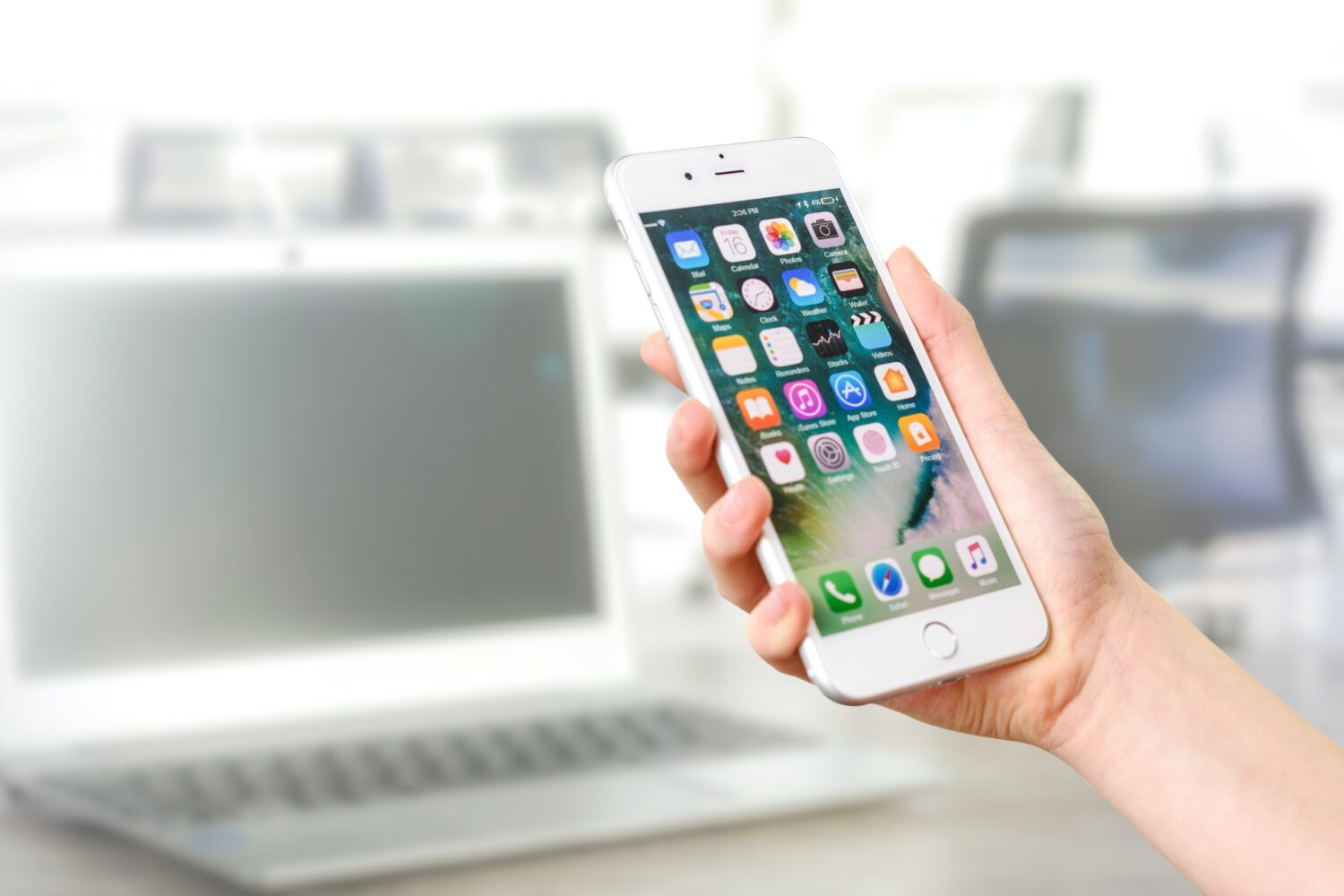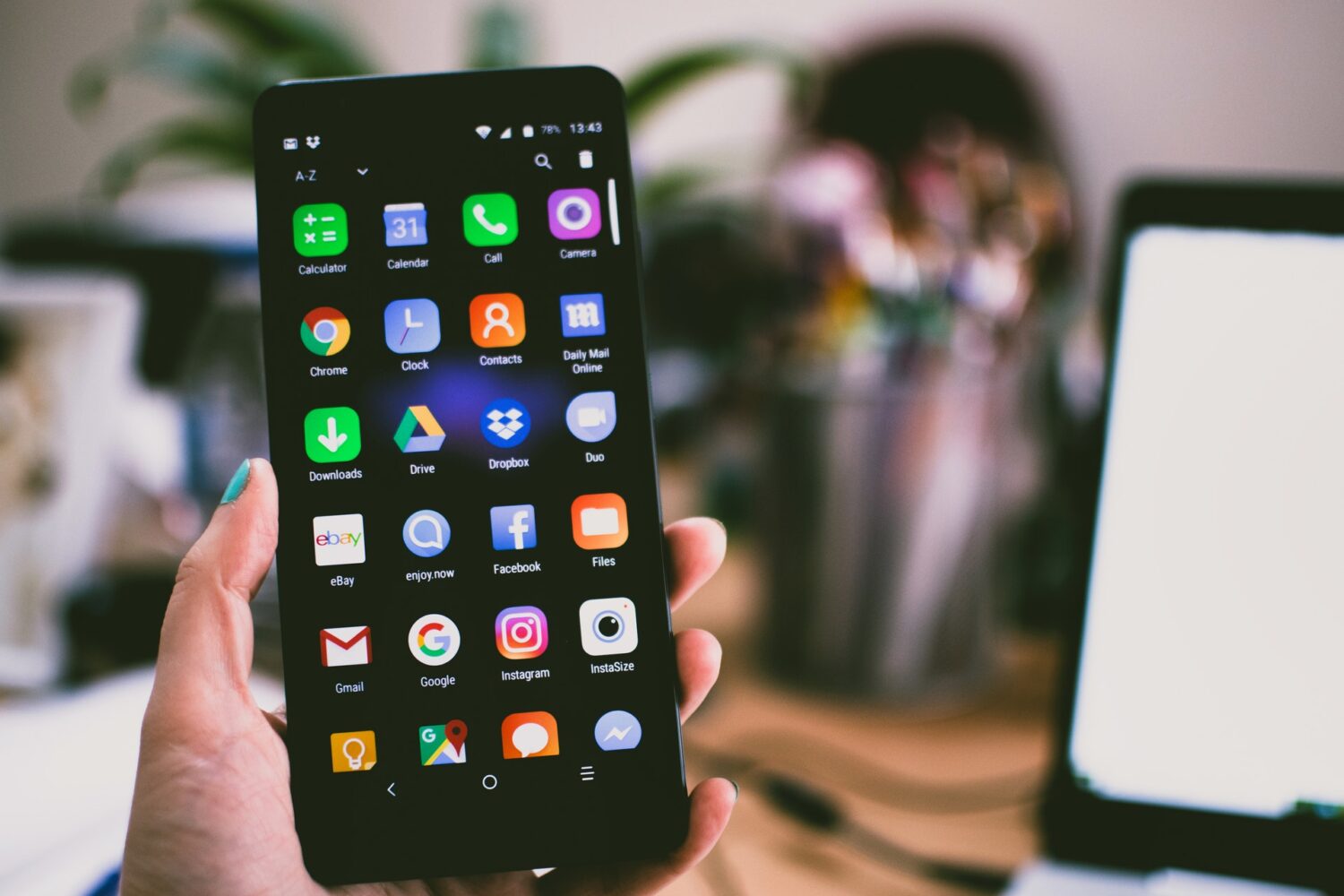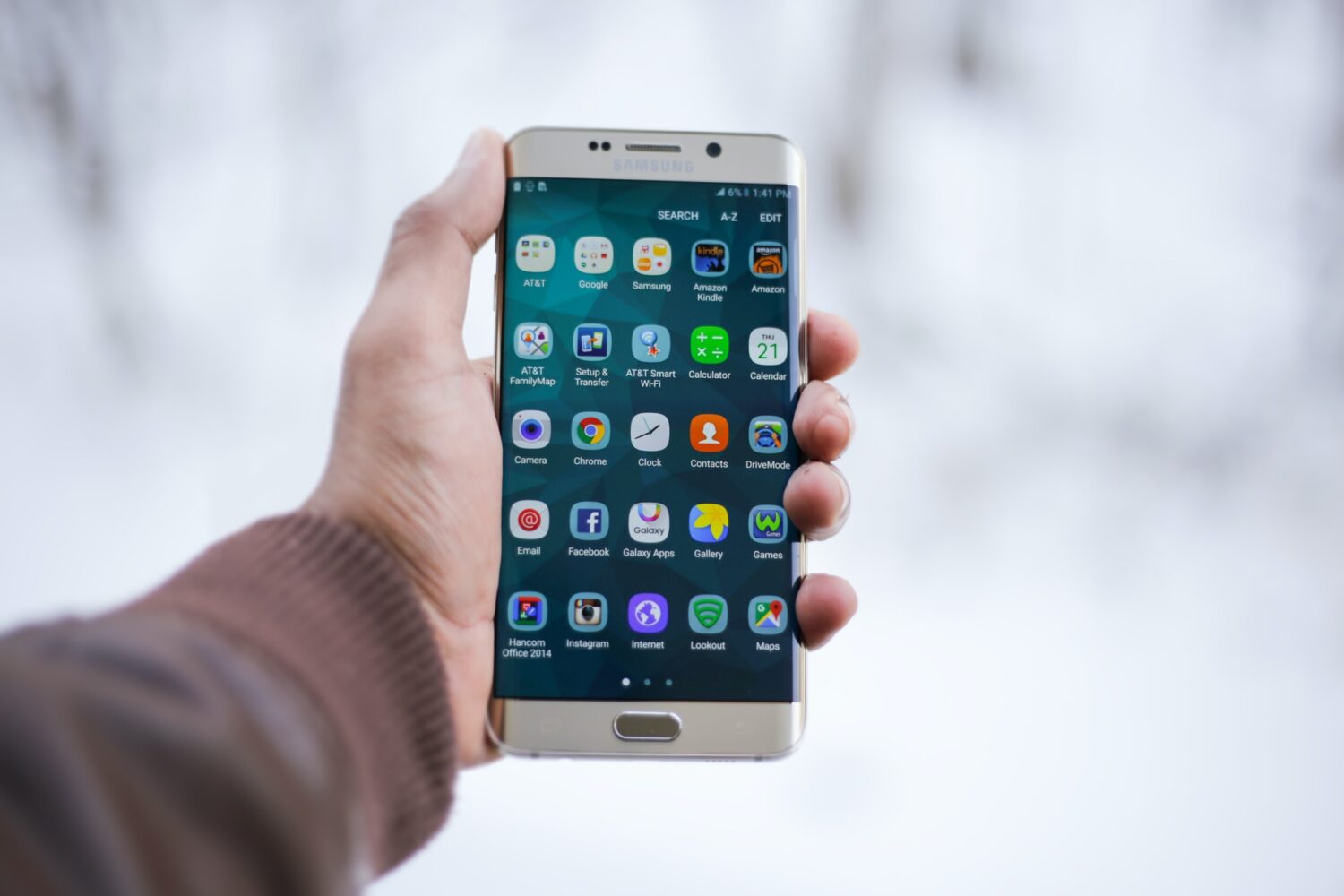There’s nothing more annoying than thinking your phone is ringing only to realize that it is someone else’s phone going off.
In the ‘sea’ of similar ringtones, it’s nice to be able to hear an original tone. Before we dive in to how you can add ringtones on your phone, be sure to also check out our article on Best Websites to Download Free Ringtones. After you get the free ringtones, follow the steps below to add to your phone.
Table of Contents:
How to Create & Add Ringtones on your iPhone
First, let’s go to your Desktop
1) Open iTunes on your Desktop
If you don’t already have the song or sound you want to use on iTunes, this is what you need to do to add it:
2) In iTunes, go to File on the menu bar and go down to ‘Add to Library‘
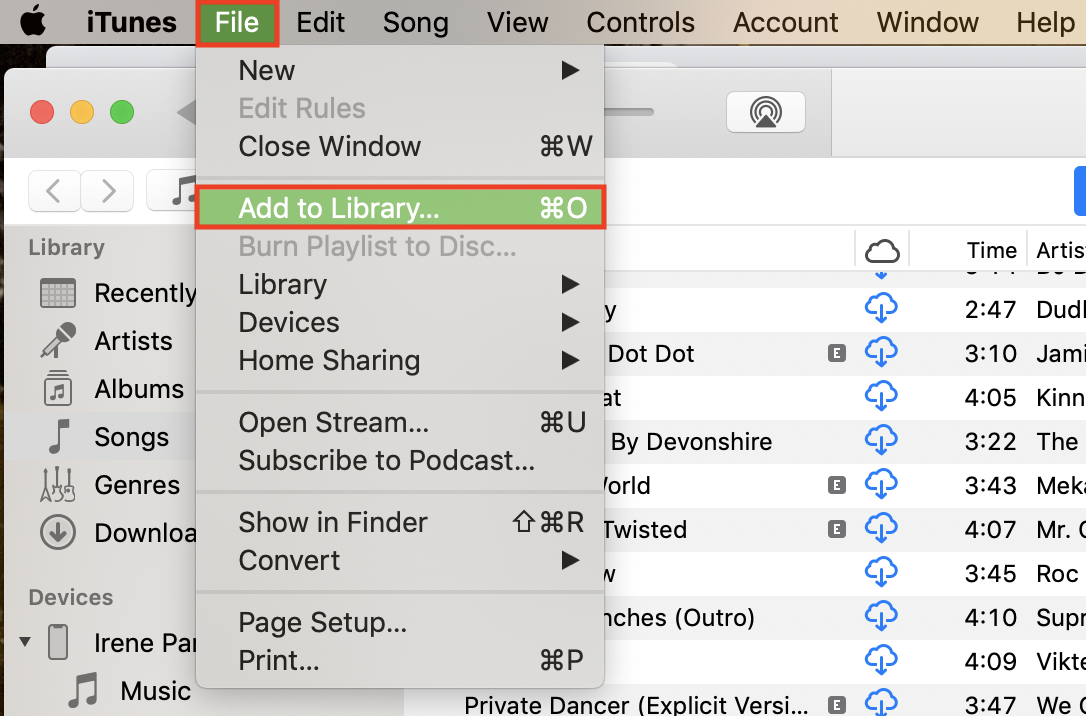
3) A window will pop open and you can select the song you want to add now
4) Select the song then click ‘open’
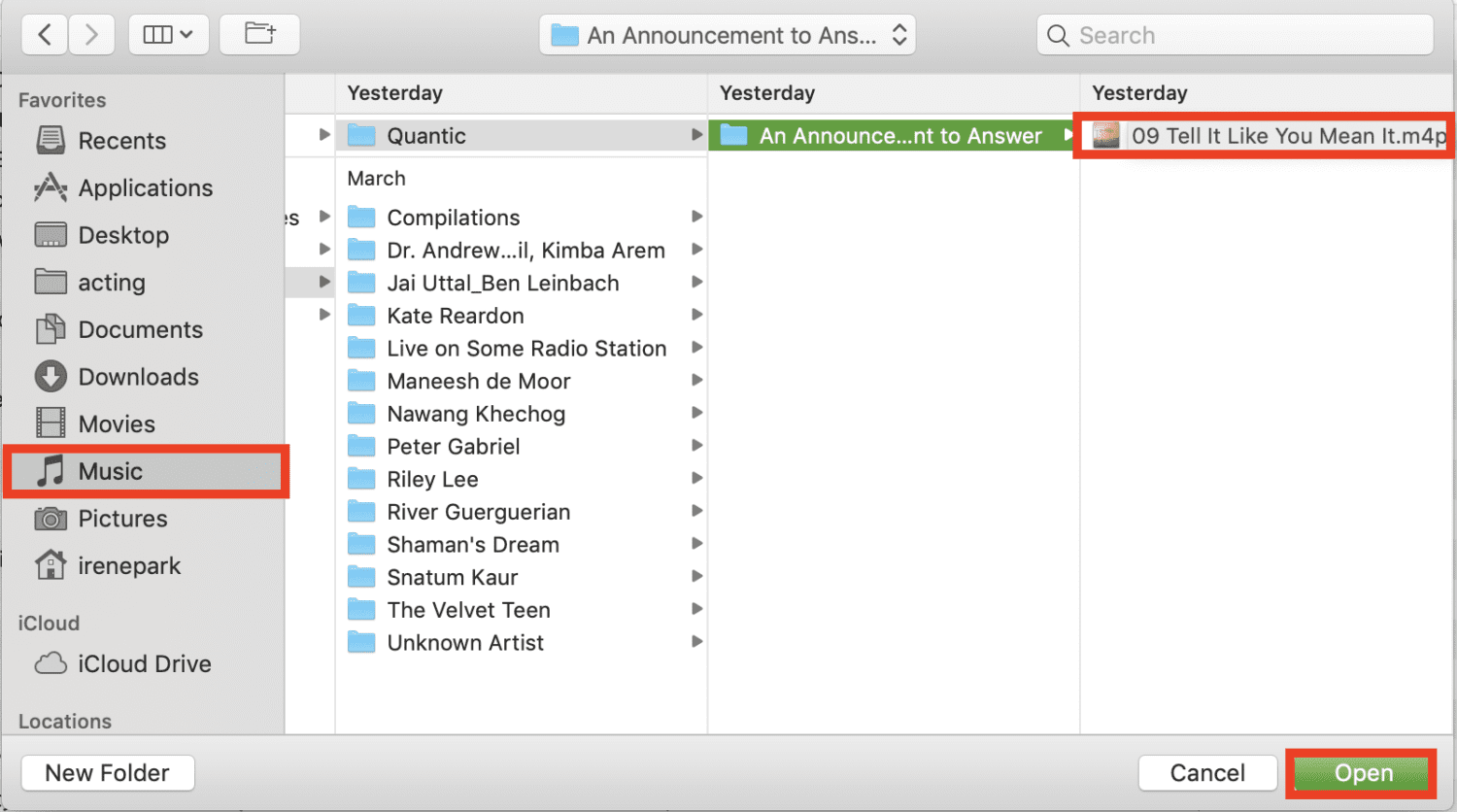
Hint: Usually songs tend to be found under ‘Music’ or ‘Downloads’ on the left menu bar
5) If you already have a song you want to turn into a ringtone, start here:
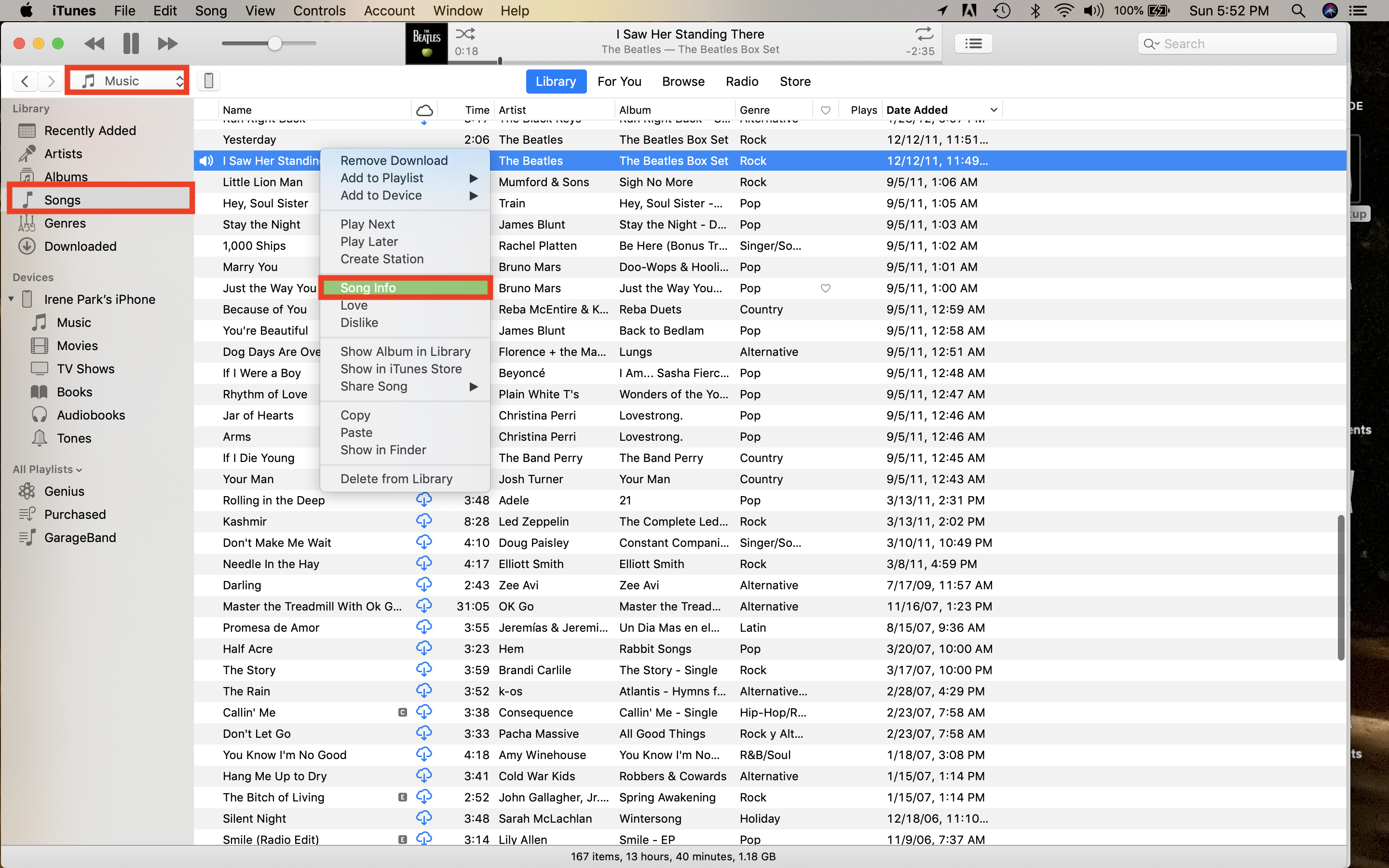
6) Make sure the drop down from the upper left side menu reads ‘Music’
7) If not, go ahead and select ‘Music’
8) Go to your ‘Song’ folder on the left sidebar in iTunes
9) Then in the main window, on the right of the sidebar, select the song you desire to make into Ringtone (Example: I Saw Her Standing There by The Beatles)
10) Right click that song, “I Saw Her Standing There by The Beatles”
11) In the drop-down menu, select ‘Song info’
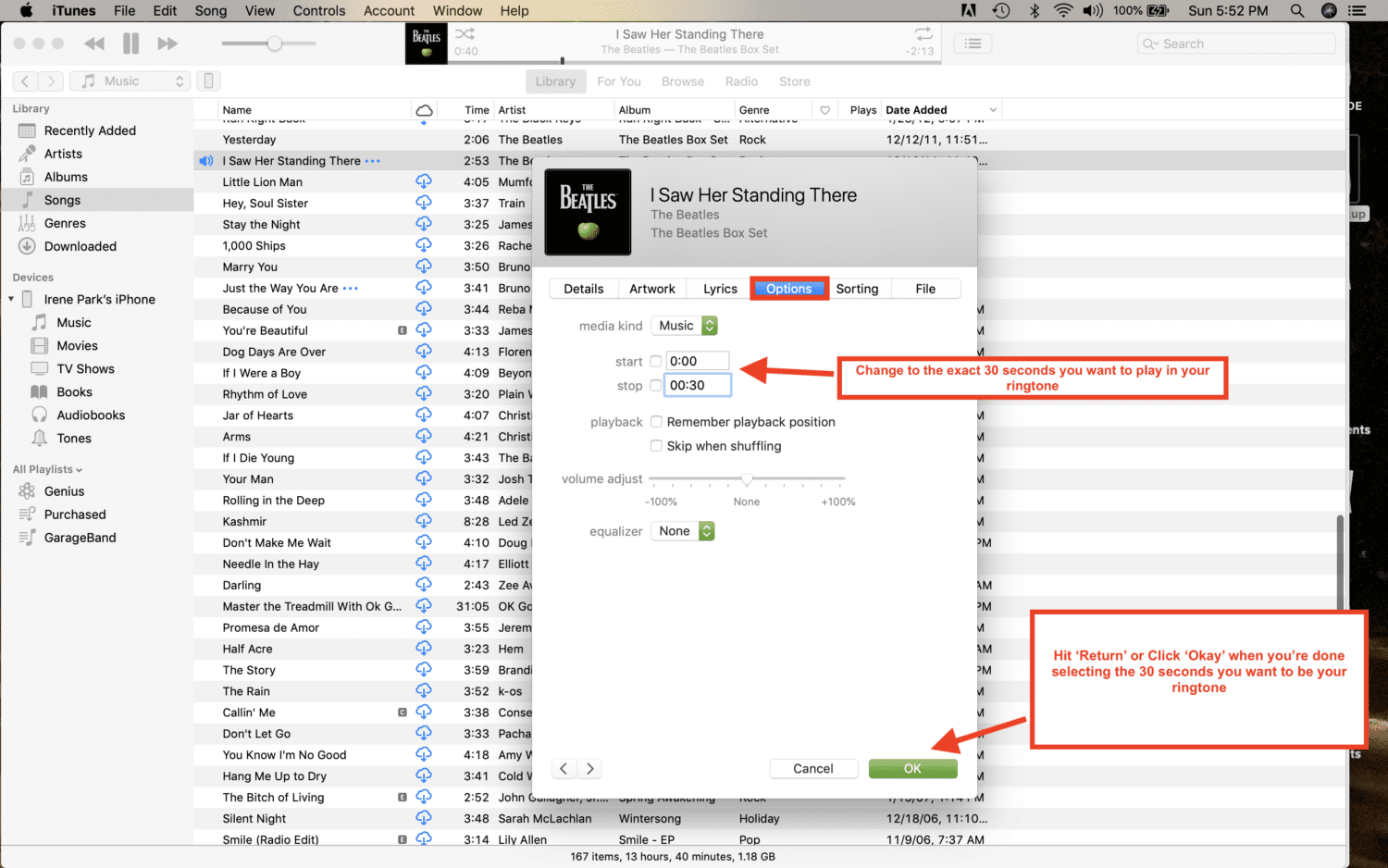
- A window will pop-up. From that window, select the ‘Options’ tab
- Check off the boxes for ‘Start’ & ‘Stop‘ then select the desired 30 secs to be the ringtone (Start 0:00 to Stop 0:30)
- Click ‘Ok’ or Hit ‘Return’
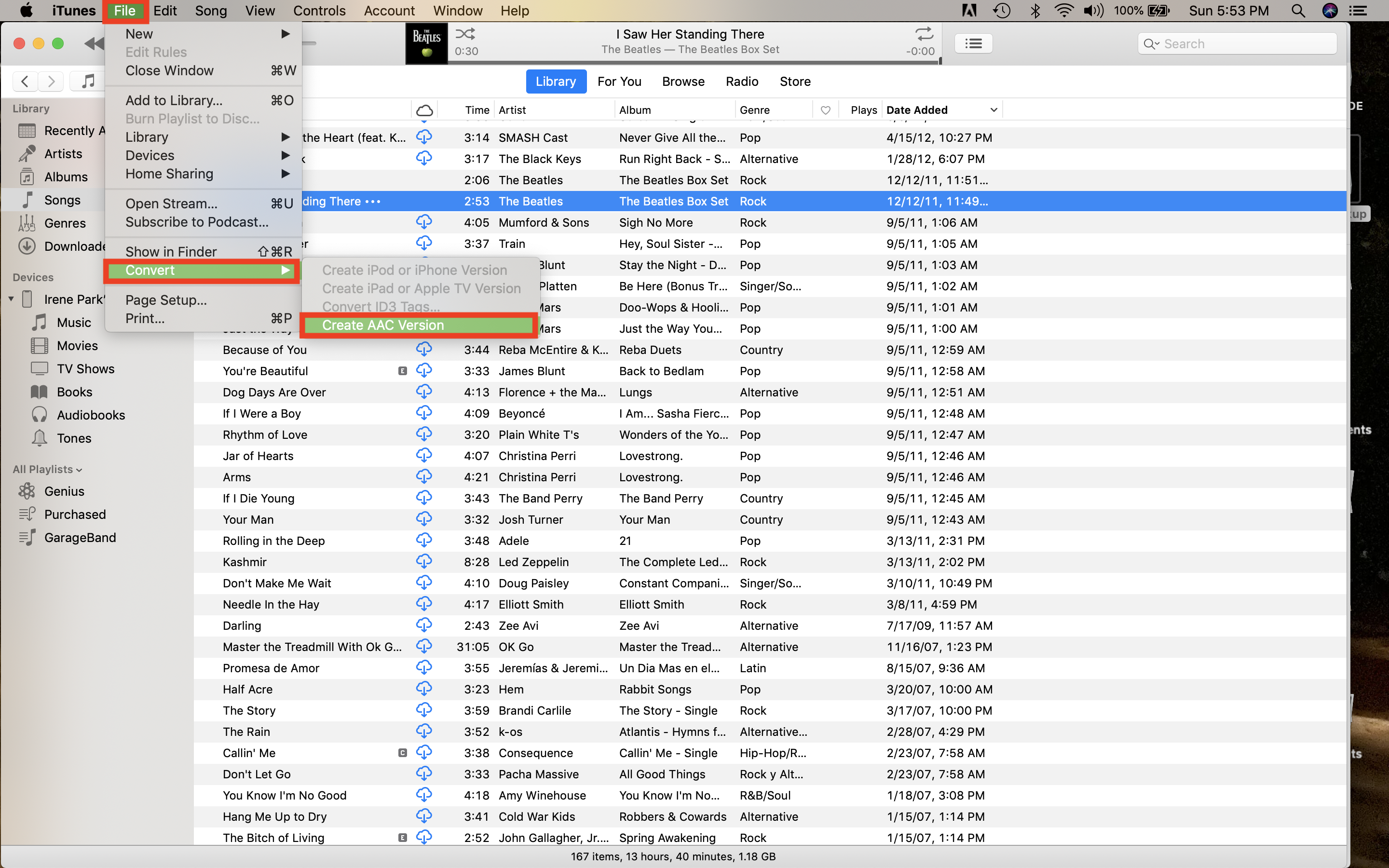
12) Go to the iTunes menu bar, select File, go down to Convert, then hit Convert AAC Version
13) Once the song converts, you’ll hear a notification go off and your new 30 sec AAC version of the song will pop up (usually at the top of the iTunes main window)
14) Select the converted AAC version of the song, right click it, and select ‘Show in Finder’ (for macOS) or ‘Show in Windows Explorer’ (for Windows)
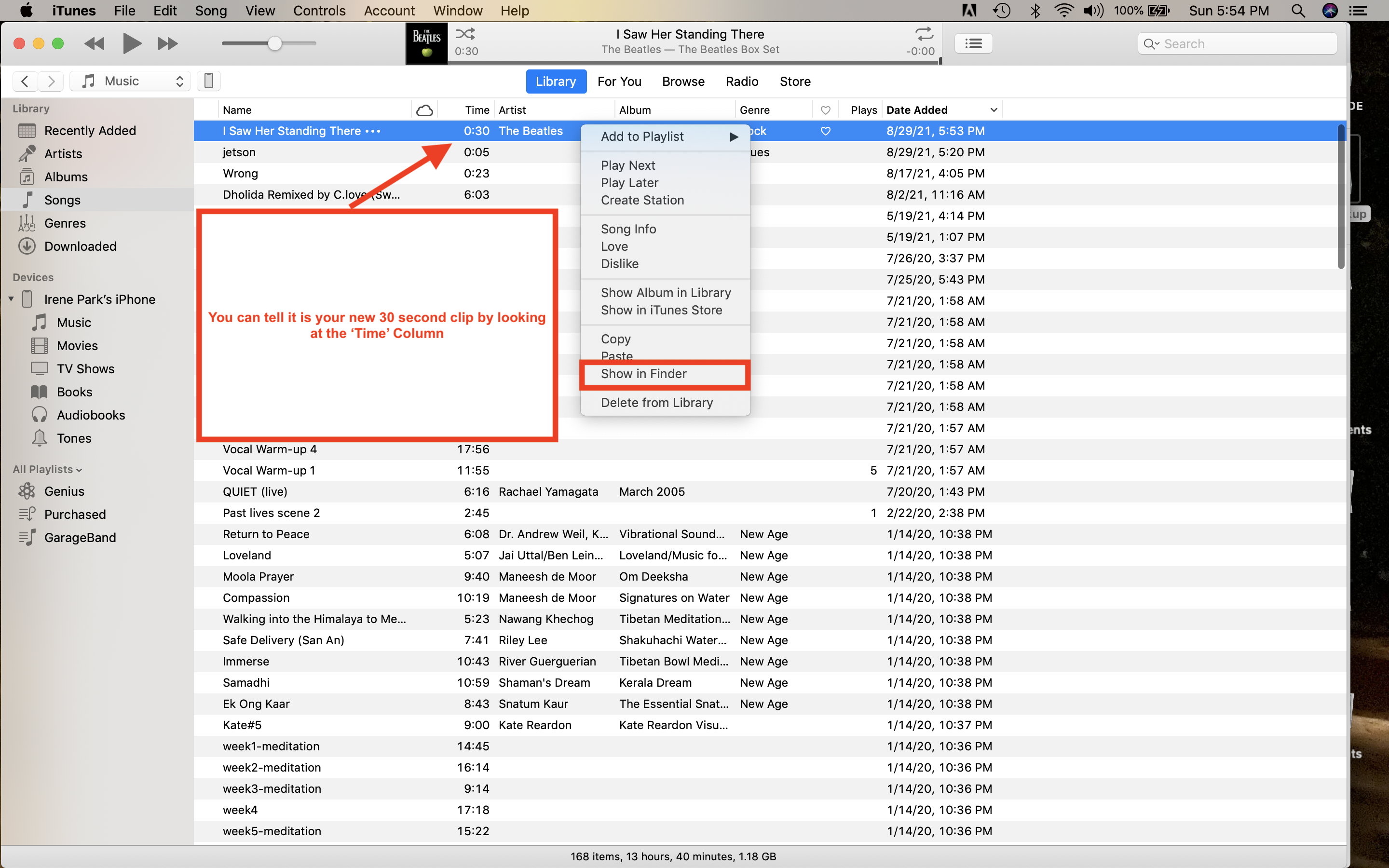
15) In the ‘Finder’/Windows Explorer folder, right-click, select ‘rename’
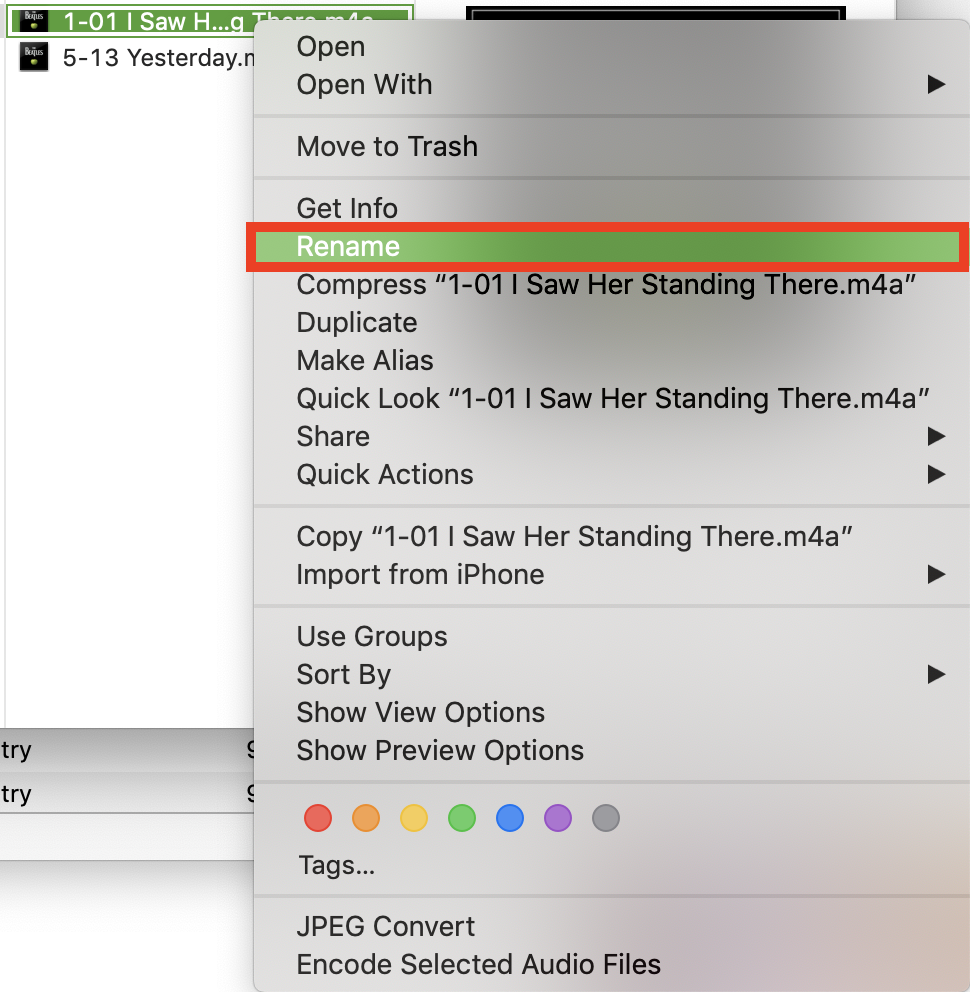
16) Change the file extension from .m4a to .m4r, then hit ‘return’
1-01 I Saw Her Standing There.m4a
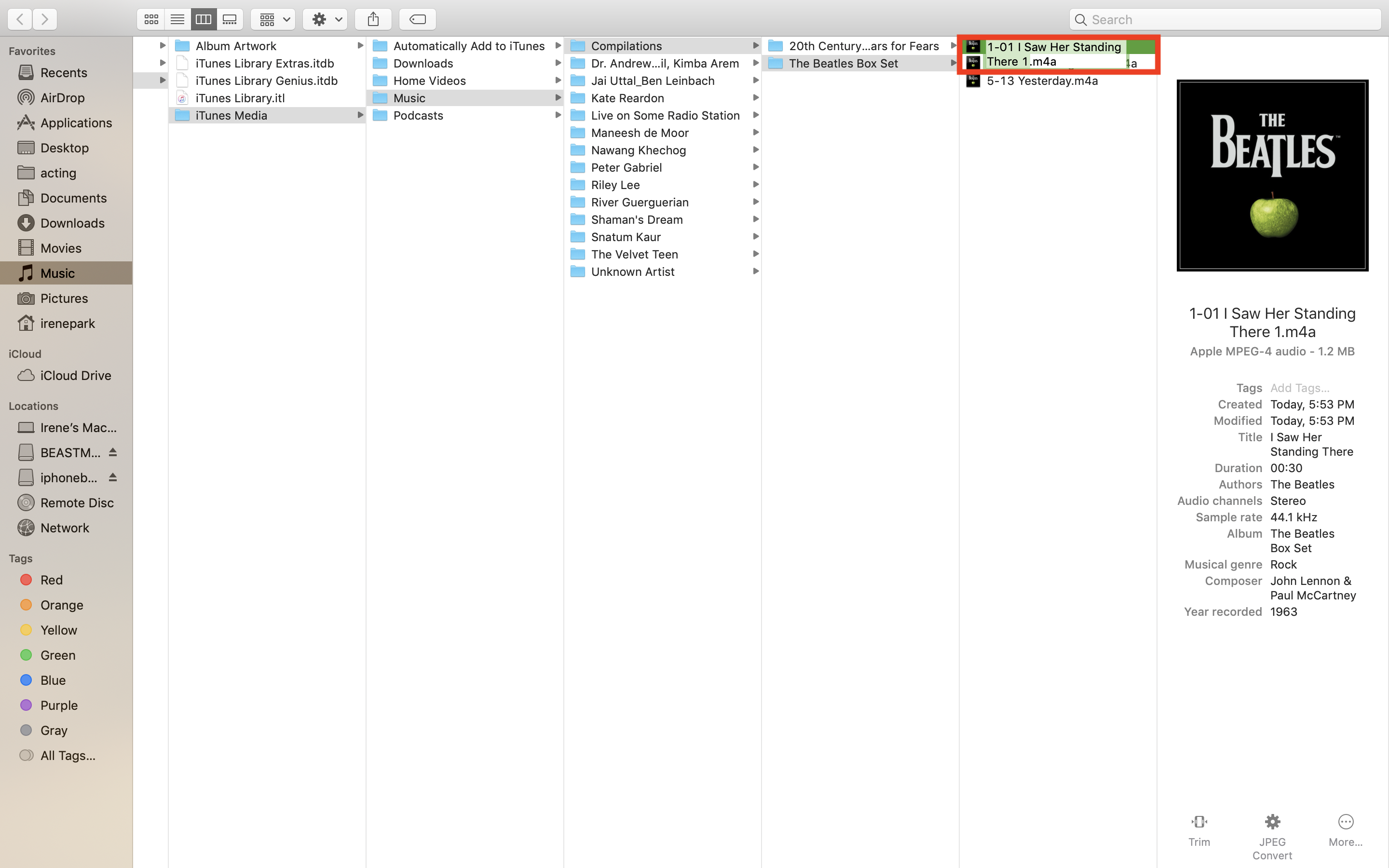
Now: 1-01 I Saw Her Standing There.m4r

17) You will get a prompt window asking if you want to change or keep the extension you want to use, select ‘use .m4r’ – KEEP THIS WINDOW OPEN
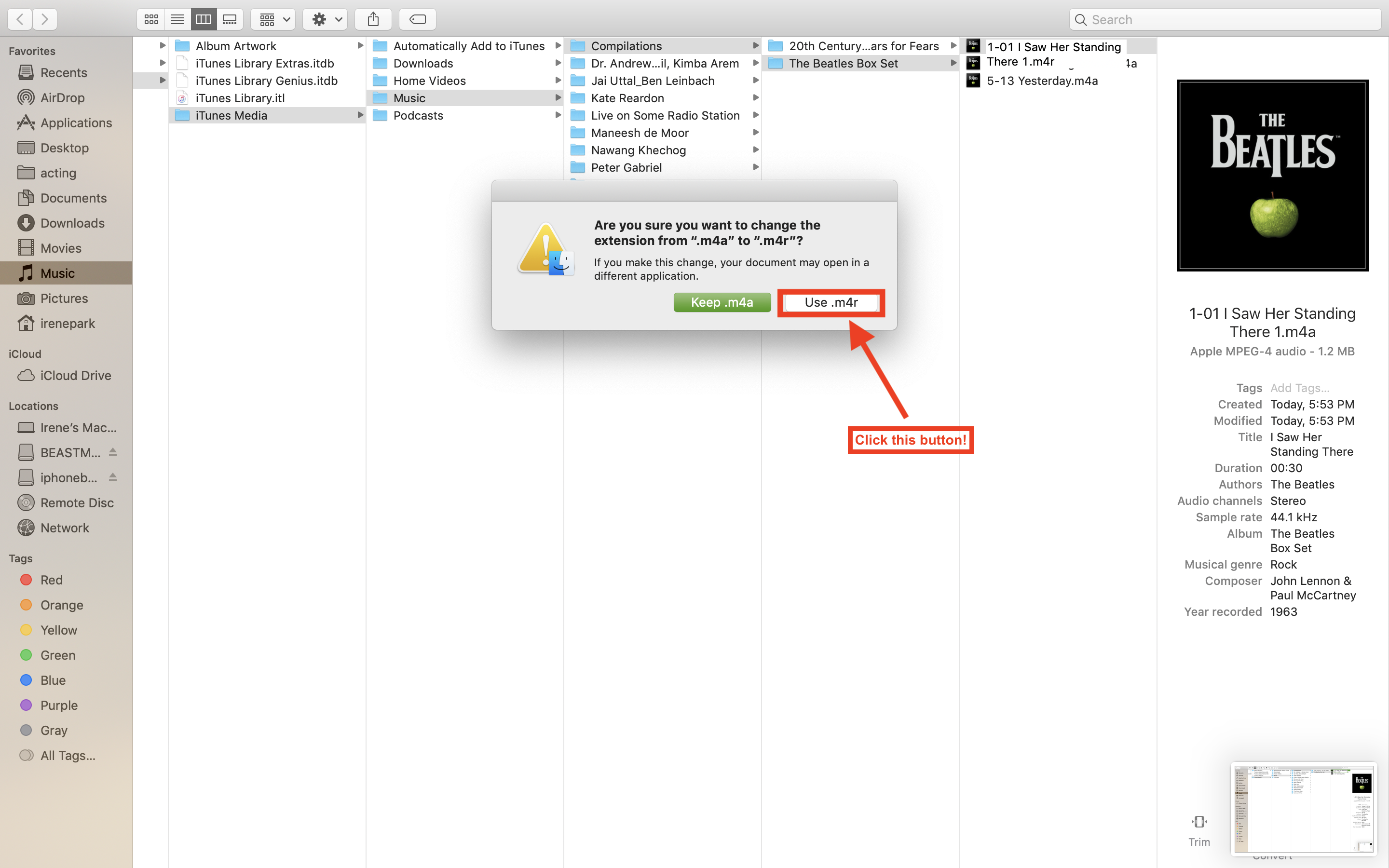
18) IMPORTANT STEP: Go back to iTunes and delete the new file you just made!
- Right click on the 30-second song clip you just converted, then go down & click ‘Delete from Library’
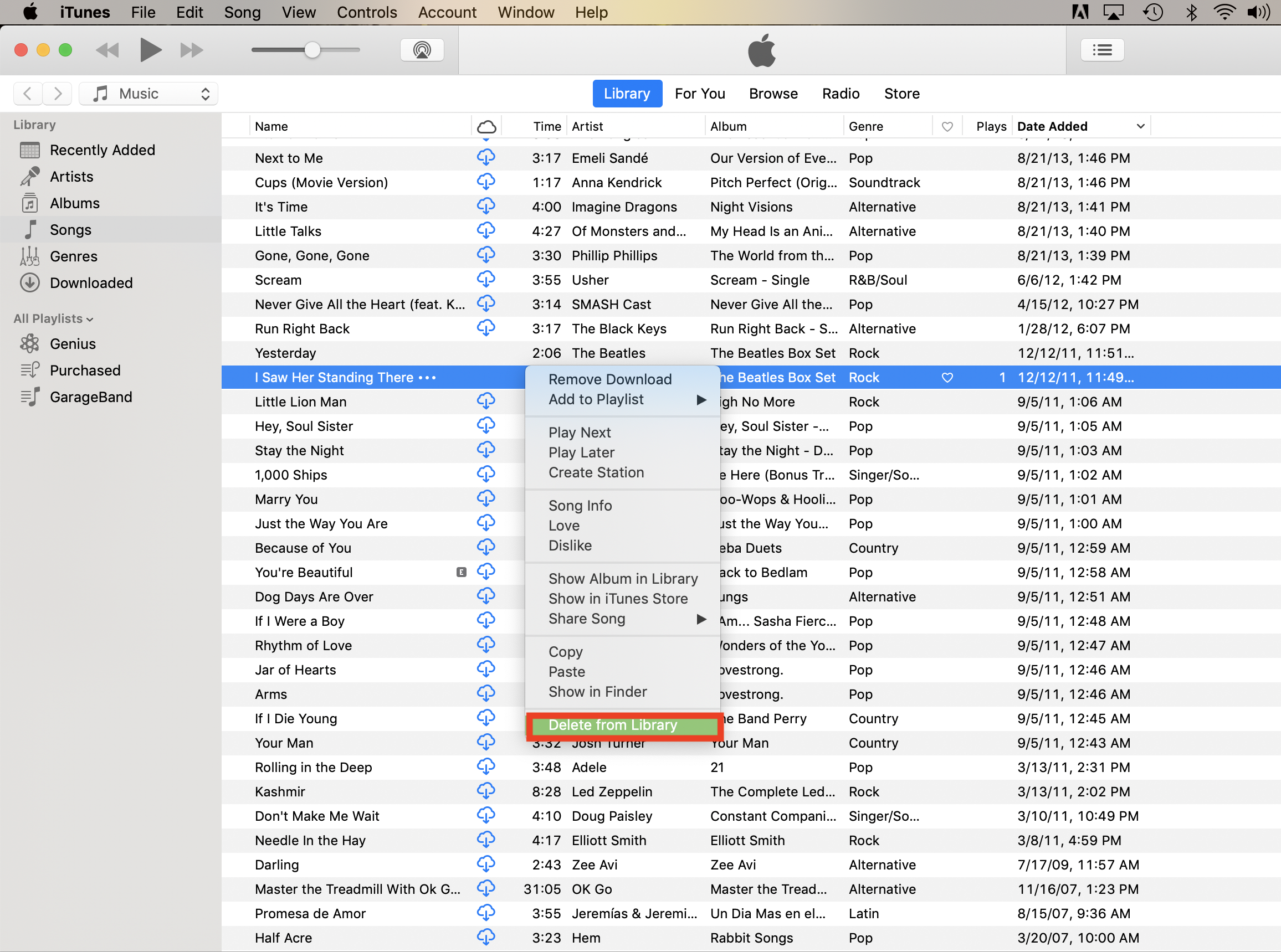
- iTunes will open a window prompt asking if you want to delete the song file from the library: click ‘Delete Song’
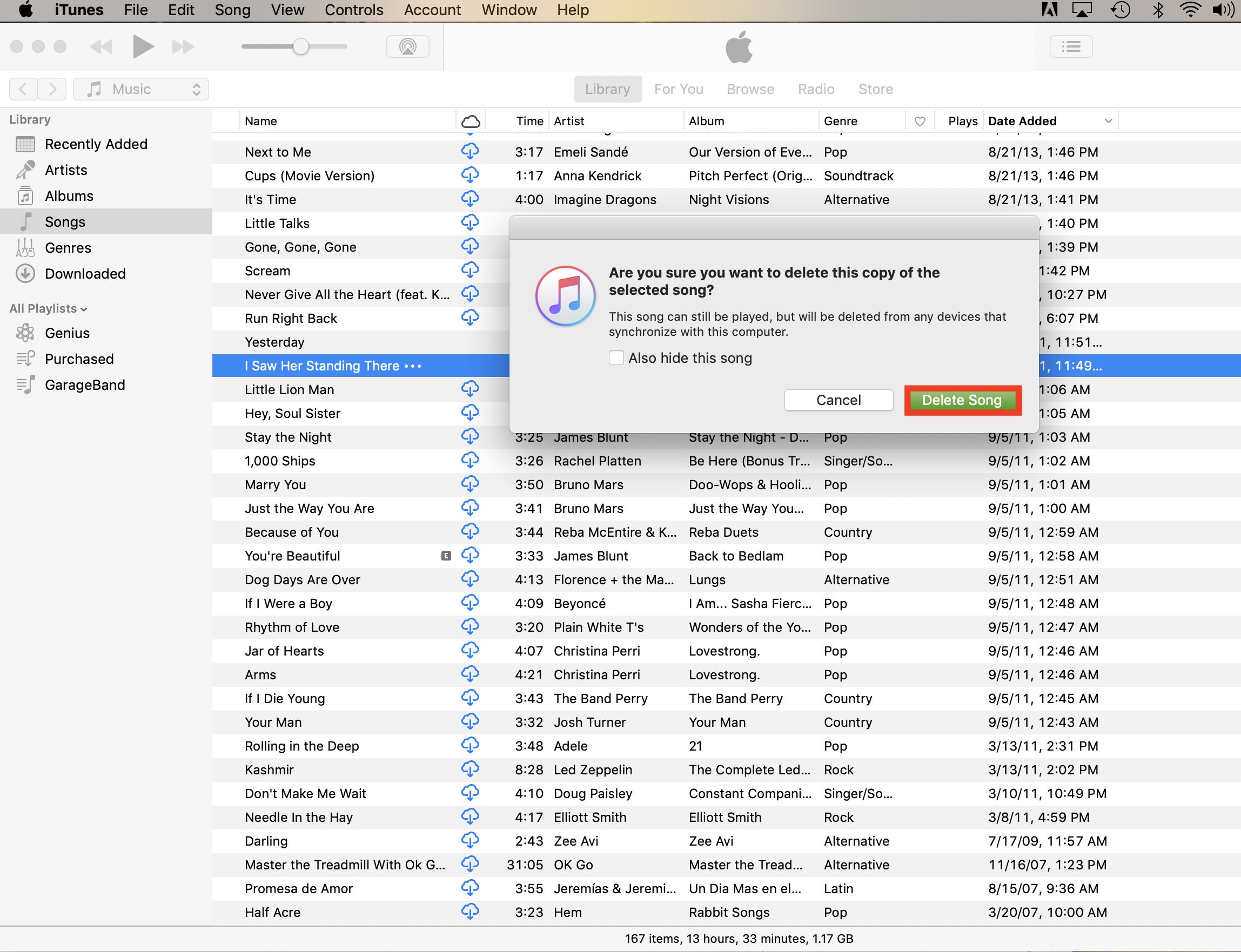
- iTunes will then ask if you want to ‘Keep File’ or ‘Move to Trash’ – Click ‘Keep File’
- Yes, it will disappear from iTunes – but worry not, we have it in the desktop

19) Connect your iPhone to your computer using an original lighting cable provided by the manufacturer
20) Your iPhone should show up on the left sidebar in iTunes (it might ask you to input your passcode or unlock with Face ID if it was locked when you connected the phone to the desktop)
21) Go to the ‘Finder’/Windows Explorer folder on your desktop (remember the one I asked you to keep open?), locate the ringtone you created (Example: I Saw Her Standing There 1.m4r)
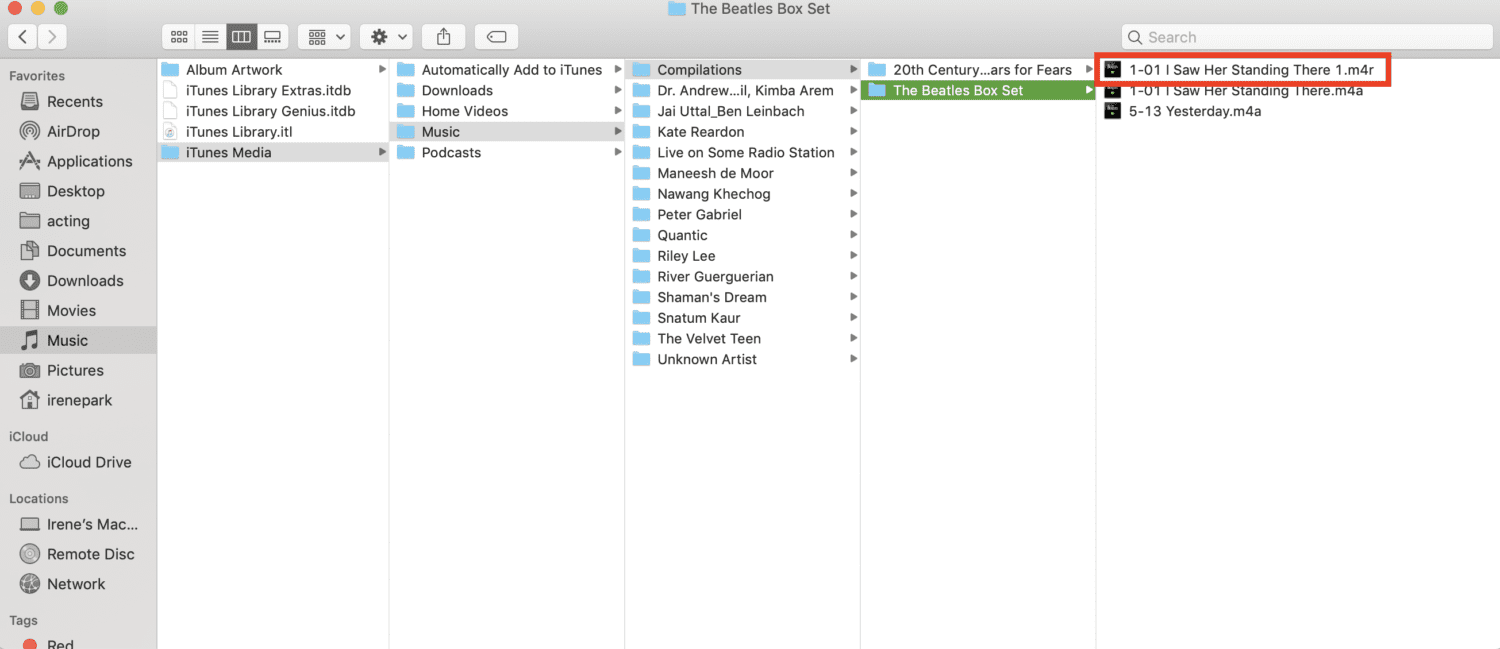
22) Select the ringtone you just created (it has the .m4r extension) then drag and drop the ringtone into the iPhone folder (on the left side of the menu)
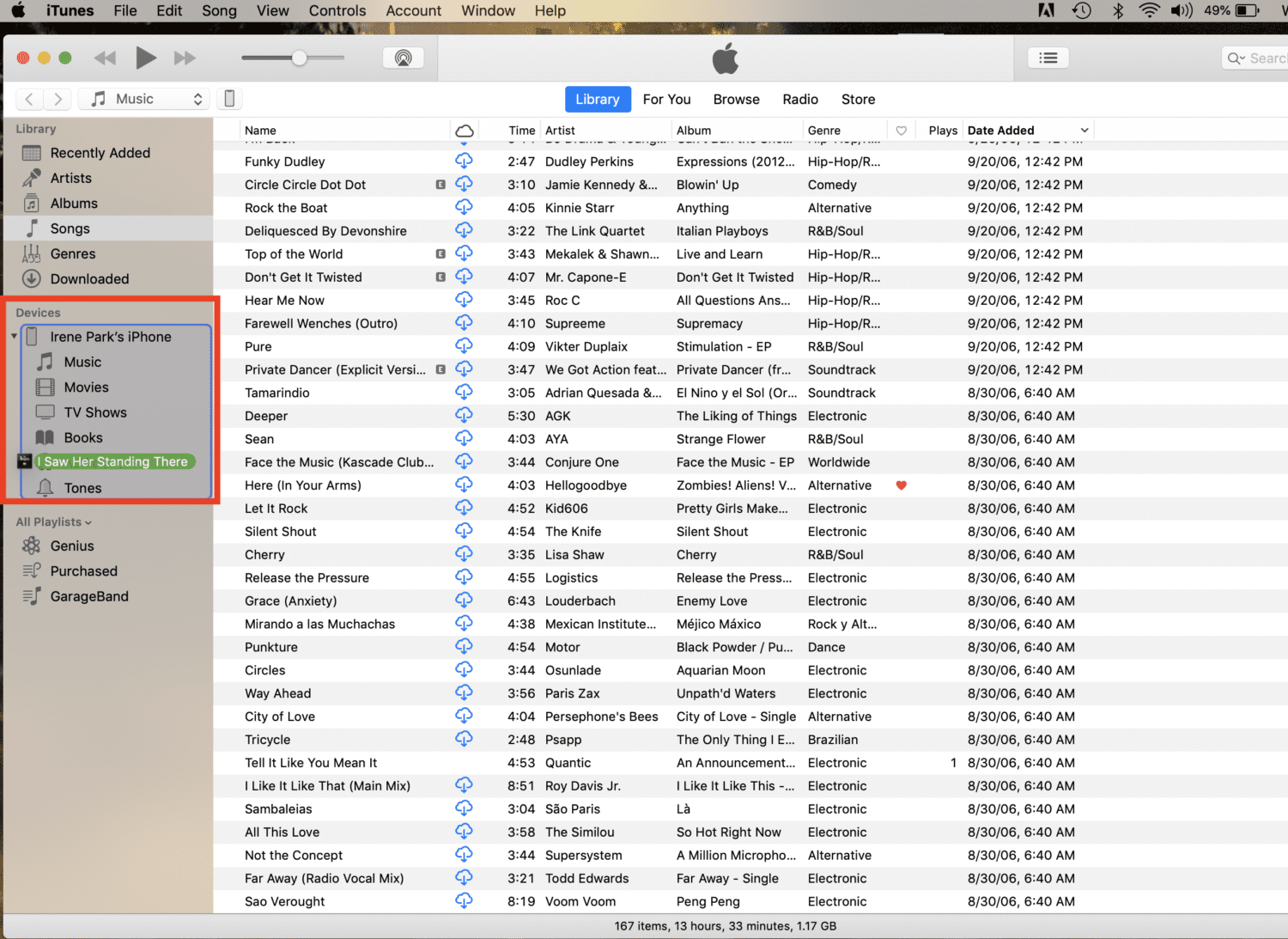
23) The ringtone should now show up under the ‘Tones’ subfolder under your iPhone folders
24) If it shows up in the ‘Music’ subfolder than there was a step missed!
Now, let’s go to your iPhone so we can play the new ringtone
1) Go to your iPhone, select Settings on your main screen

2) Under the ‘Settings’ Menu, go down & select Sounds & Haptics

3) Under Ringtone, you can change it from one of the generic offerings to one of the new ringtones you just added to your phone
- When you’ve added the ringtone correctly, there should be a check mark next to the ringtone you selected
- Click the ‘Back’ button at the top of the screen & that’s it
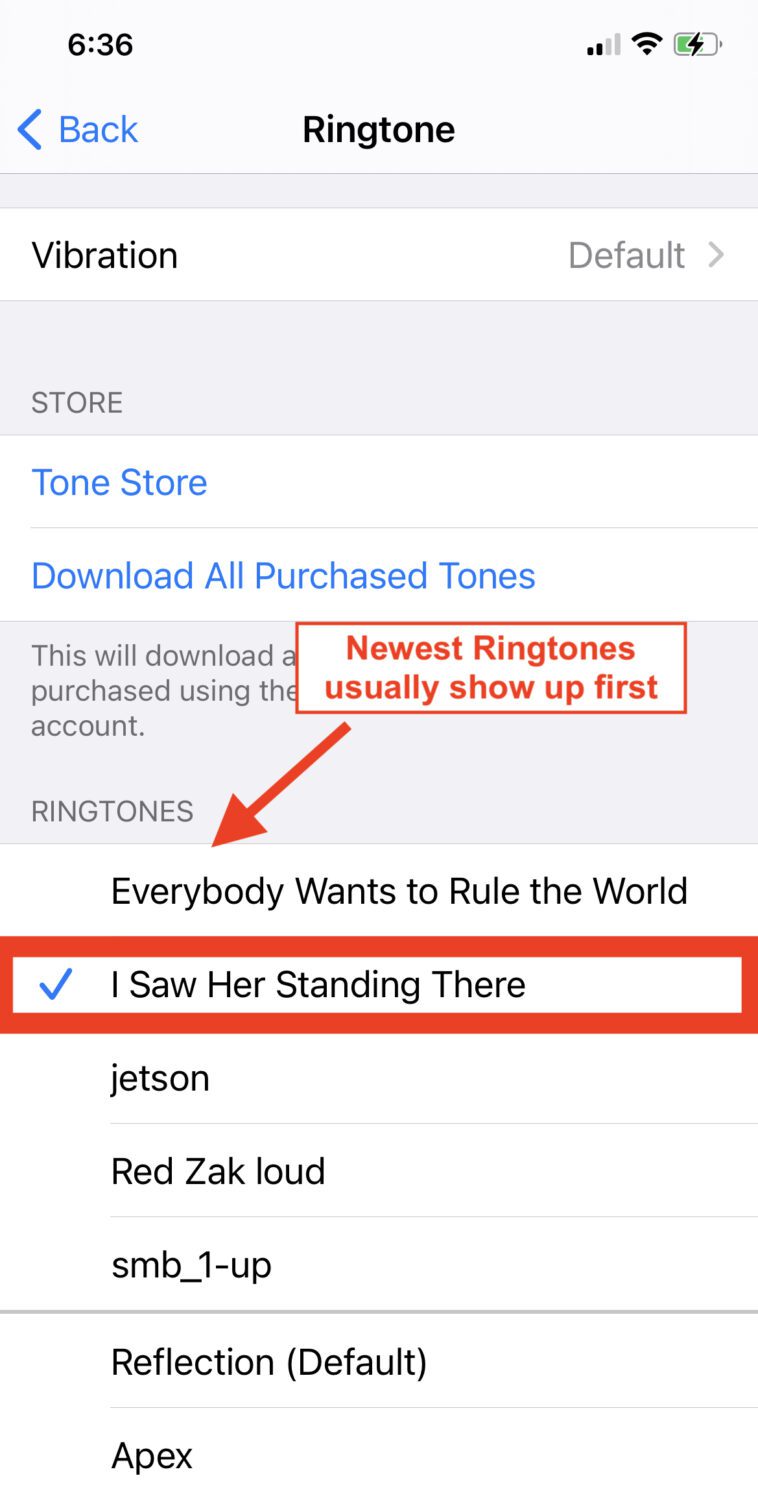
On an Android
Settings may vary depending on your Android phone’s manufacturer
Whereas the specific steps for the iPhone depends on the iOS and not simply which iPhone model is being used, these specific steps to add a ringtone depends on which Android phone you have. The process below is on a Pixel 4a device running Android 11.
On the desktop
- Download or transfer the song you want to set as your ringtone to your phone through USB, direct download, or any cloud storage solution of your preference
- With a service like Google Play Music, you can download the mp3 file to your phone directly
- Drag & drop the ringtone file into the Ringtone folder
- The location of this may vary depending on the phone you are using. It is most commonly found in the base folder for your device, but may also be found at /media/audio/ringtones/
On the phone
- Open the Settings app
- Go to Sound & vibration
- Select Advanced
- Select Phone ringtone
- Select My Sounds
- If your ringtone doesn’t appear, select the + button in the bottom-right corner.
- Find the song and select it
- Select Save
On a Samsung
Settings may vary depending on your Android phone’s manufacturer
On the desktop
- Download or transfer the MP3 to your phone by connecting phone to computer with the provided cable
- Move your song to the Ringtones folder using a file manager app
On the phone
- Open Settings, and then tap Sounds and vibration
- Select Ringtone, and a list of tones you can swipe through will appear
- Tap the plus sign under Ringtone settings
- If it is your first time or has been along time since you’ve changed your ringtones, you may need to tap ‘Allow’
- Select a song from the files you have stored on your phone
- If you want the song to play from the beginning, tap next to switch off “Play selected highlights only”
- When “Play selected highlights only” is on, select parts of the song will play
- Select Done when you are finished



